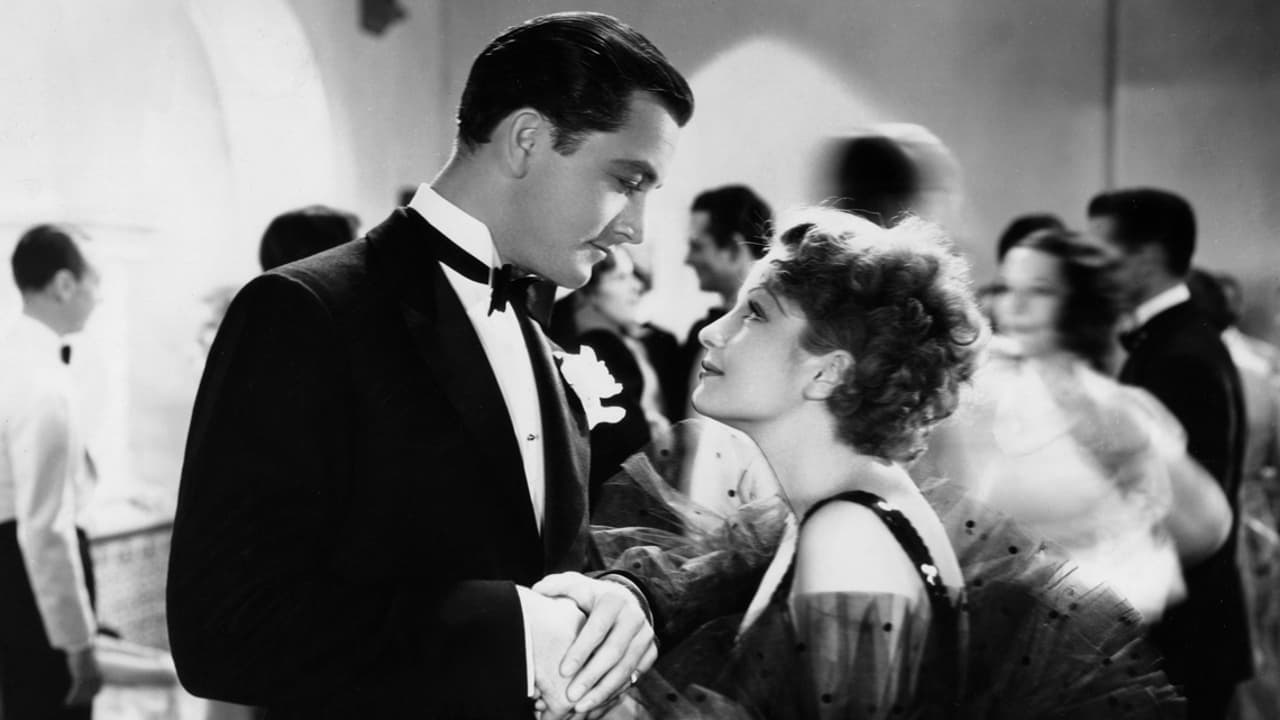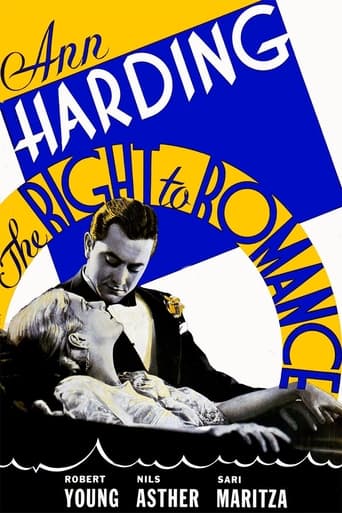Mjeteconer
Just perfect...
RipDelight
This is a tender, generous movie that likes its characters and presents them as real people, full of flaws and strengths.
Portia Hilton
Blistering performances.
Allissa
.Like the great film, it's made with a great deal of visible affection both in front of and behind the camera.
mbrindell
No, this is not Harding's best film, nor is it one of her better flicks. It is, however, an enjoyable example of the type of movie that she is most fondly remembered for: a well-crafted "woman's film" exploring sensitive social issues. Warning: Care must be taken to view this film within the context of its time. Please don't apply your 2010 sophistication to this 1933 movie; that's just not fair.In the early '30s Harding was a pioneering actress. Her skills as an performer (film & Broadway) were immense. She was well respected by her peers, and her movies generally returned comfortable profits for her studios. Films like "The Right to Romance" were her forte. Few actresses could match her in this genre. None could top her on her best day.I say that Harding was a pioneer because she, along with fellow actresses Loretta Young, Barbara Stanwyck, Kay Francis, et al, aggressively pushed the woman's rights issue. The "right" referred to in this title is Harding's character's "right" to romance, not the right of an entitled male character.In this film Harding plays a medical doctor. While America's ladies were slowly breaking into the medical profession during the '20s and '30s, their numbers were still very small and generally limited to the R.N. field. Harding's character is not only a doctor, but she is a very successful and respected practitioner--one who is in great demand. Harding plays the role with great strength and understatement. Her character works hard and succeeds wonderfully in working tiny miracles, but the movie's script is smart enough to demonstrate the drudgery and boredom that can also be found in the medical profession, and of course the dangerous strain of overwork.After a brief vacation fling with a wealthy and irresponsible playboy, the good doctor marries the worthless cad and together they set up house. Here's where things get good. Harding's "Peggy" becomes the stereotypical "responsible man" of the house. She's up early every morning and goes to work every day. She works long and late hours. Meantime, her husband lounges about the house listening to football games he wishes he could attend.It may seem hard to imagine, but in the pre-Code era this little drama (it's not a comedy) was quite successful. People wanted to see this movie; they paid an admission price. Strong women were box-office gold. And please don't think the reversed male/female roles were played for laughs, because this is simply not the case; it's done tastefully, and it is very believable. This film was heady stuff in its day.When the husband and wife eventually do parts ways, it is Peggy who dumps Young's character. She does it for two reasons: 1) Her husband is a skirt-chasing lout and not deserving of her, and 2) Our straight-laced, hard-working Peggy has found another man, a better man! Talk about women's liberation.When the Code was enforced in '34, actresses and actors ceased to be equals. The Ann Hardings and Kay Francises were relegated--for the most part--to obedient, submissive wife roles. Even Myrna Loy's Nora Charles became a bit of a sidekick post '34, as opposed to the first Thin Man movie where she is every bit Nick's equal. The Code (it was pressed primarily by conservative Christian religious groups) dumbed down the ladies' roles. They became passive and demure (religions like 'em that way).The Code not only "corrected" immoral Hollywood's corrupting issues of too much exposed feminine leg, and too much vulgar language, and too much social degradation, it also tossed the fine ladies back into the kitchen and into the typing pool. It kept woman from being man's equal--at least on film in America--for the next 30 years. Screwball comedies were some consolation, but only "some."
wes-connors
Beautiful cosmetic surgeon Ann Harding (as Margaret "Peggy" Simmons) feels her biological clock ticking away. "The years are going so fast," she tells her somber nun, "Am I, after all, just a giddy woman at heart?" Ms. Harding takes a leave of absence from work and goes from staid Manhattan doctor to fun-loving Los Angeles sophisticate. She cuts down on smoking and has a whirlwind romance with wealthy playboy Robert Young (as Bobby Preble). You should expect their chance for happiness will be threatened... This Harding vehicle always leaves you wondering why she is so infatuated with Mr. Young while ignoring magnetic Nils Asther (as Helmuth "Heppie" Heppling), which may be the point.**** The Right to Romance (11/17/33) Alfred Santell ~ Ann Harding, Robert Young, Nils Asther, Sari Maritza
kenn_honeyman
You must see, "Double Harness"-1933, to appreciate how GREAT an actress Ms. Harding was!... i thought lots of comments were posted on the film site,or her biography site, butijust checked, and most were gone;what happened to them? I thought there were at least 5 posts saying what great heights Ms. Harding's subtle performance achieved! She had been nominated for Academy award in 1930 for, "Holiday". Marie Dressler won that year for "Min, and Bill"- a great performance,too!This movie,"Holiday", was remade with Katherine Hepburn, and Cary Grant in 1938. This was a great comedy... but sadly the Harding movie is almost in total disrepair at the Library of Congress. You must see Double Harness!!!!!!!!!!
jkarman
It's sad that there are now, one or two generations who don't know about Ann Harding. Why she isn't as memorable as other MGM headliners I'll never know. Thankfully, we have these well preserved films for their legacy to live on and to memorialize the art. The 'Right To Romance' has to be the BEST movie of 1933. It stands against competition that rate solid 9.9 and less but this rates truly a 10.0. Once watched, you will become a fan of Ann Harding who gives the strongest performance of her career. A well written story which allows Nils Asther to display his acting talent too, (which outshines Robert Montgomery). This movie is short, to the point, memorable and besides, an amazingly well written story. Blow the dust off this one and find a young friend who you'd like to turn onto an ageless but forgotten classic. I promise, you won't regret it.

